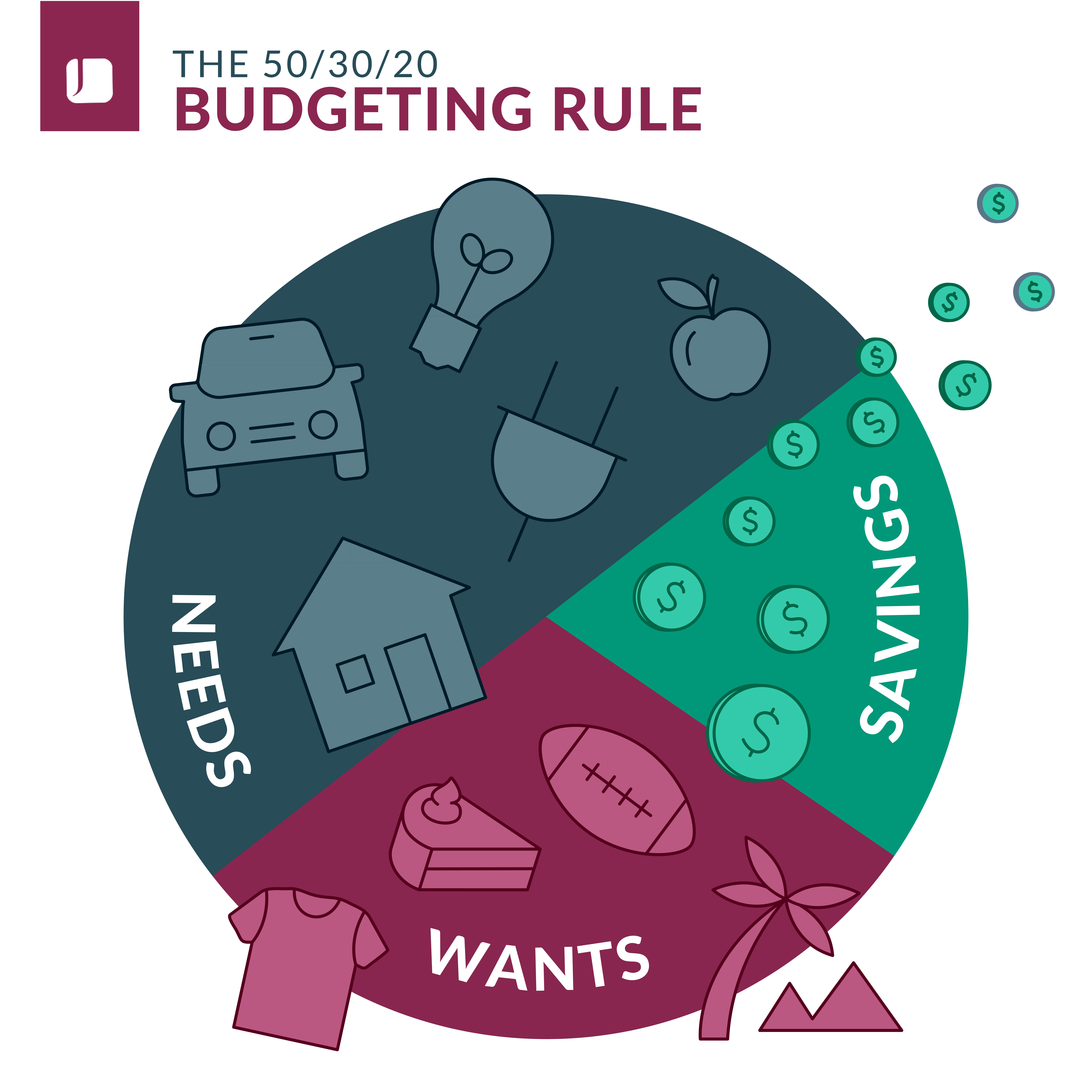Your Financial Life
The 50/30/20 Rule Explained: A Simple Budgeting Strategy for Financial Success
4 minute read time
Managing personal finances can be overwhelming. However, the 50/30/20 budget offers a straightforward and effective strategy to not only manage your money but also pave the way for financial freedom. This budgeting method simplifies how to allocate your income to cover needs, wants and savings. Here’s a closer look at how the 50/30/20 budget can help you take control of your finances:
Understanding the 50/30/20 Budget

The 50/30/20 budget breaks down your after-tax income into three distinct categories:
- 50% for Needs: These are your essentials, your must-haves. This half of your budget covers housing, utilities, groceries, transportation, health insurance and other necessary bills. The key here is distinguishing between what you truly need and what you can live without, which can sometimes blur into 'wants'.
- 30% for Wants: This portion is reserved for everything that enhances your lifestyle but isn’t necessary. It includes dining out, entertainment, your Netflix subscription and that weekend getaway. While it’s important to enjoy life, maintaining discipline in this category is crucial for financial stability.
- 20% for Savings and Debt Repayment: The final slice of your income pie goes towards building your future. This includes savings, investments and extra payments on any debts you might have. Whether it’s contributing to a retirement plan, building an emergency fund or paying down credit card debt, this 20% is your ticket to long-term financial security.
Benefits of the 50/30/20 Budget
The 50/30/20 budget rule offers many advantages:
- Simplicity: The 50/30/20 rule is straightforward, making it easy to implement and maintain without any complex calculations or long spreadsheets.
- Flexibility: This budget can adjust to different income levels and financial goals. Whether you earn a lot or a little, the percentage-based approach scales to your specific financial situation.
- Balanced Financial Life: By dividing your income into needs, wants and savings, the 50/30/20 budget ensures a balanced approach, promoting financial well-being while still allowing room for the “wants” in life.
Implementing the 50/30/20 Budget
Now that you understand what a 50/30/20 budget is and why it’s important, here are the steps on how to start implementing this method today:
- Step 1: Calculate Your After-Tax Income – If you're an employee with a steady paycheck where taxes are automatically deducted, your after-tax income is what you receive. For self-employed individuals, this will be your income after setting aside money for taxes.
- Step 2: Limit Your Needs to 50% – Analyze your monthly expenses to ensure that your needs do not exceed 50% of your take-home pay. This might require downsizing or finding more cost-effective options for some of your bills.
- Step 3: Adjust Your Wants – Keep track of all your wants and ensure they don’t exceed 30% of your budget. This might mean cutting back on luxury items or opting for less frequent indulgences.
- Step 4: Prioritize Savings and Debt Repayment – Direct at least 20% of your income towards savings and debt repayment. Automating your savings can help you stick to this goal without the temptation to spend.
The 50/30/20 budget is more than just a method of managing money — it’s a tool for achieving financial independence and security. By learning to categorize and control your spending in a balanced way, you can relieve financial stress and build a prosperous future. Whether you’re looking to get out of debt, buying a home, save for a dream vacation or prepare for retirement, the 50/30/20 budget can get you on the right path. Start today by connecting with an advisor.